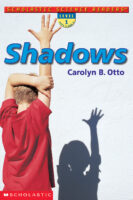Check the weather in advance and pick a cloud-free day for the experiment (full sunshine is necessary!). Choose a large area of pavement where your students can trace shadows, such as the blacktop portion of your school playground. Send home a note asking students to bring flashlights and clipboards to school for the day of the experiment.
Copy the shadow observation form, the data collection chart, and the sundial sheet. Cut out as many copies of the silhouette template as you need, and pass out the sundial sheet and one silhouette to each student. Have your students bend the figures’ feet up at the ankles and glue the feet down to the paper so the figure faces north. The figure should stand up.
Explain to students that they'll be going outside five times the following day to trace their shadows and record observations. Ask students to write down their prediction about what will happen the next day during these interactive science games.
On experiment day, students should gather all the materials they need and head outside for the sundial activity. Assign spots for each group of two, ideally 20 to 30 feet apart. Make sure all students locate which direction is north. Have them write N, E, S, and W around them in chalk on the ground as a point of reference throughout the day. When you note the sun's position, use the terminology, “the lower part of the eastern sky.”
For each group of two students, one partner should mark an X on the ground in chalk as their starting point, and then label the X with their name. That student then stands on the X, facing north while their partner traces their shadow. Both students should work together to measure the shadow from heel to the top of the head.
Inside the shadow outline, the students should record the measurement and the time the measurement was taken. The partners then switch roles, repeat the procedure, and record all of the information on their data collection chart before going back inside.
The students will repeat this procedure four more times throughout the school day as the sun changes positions in the sky (ideally twice in the morning, once around midday, and twice more in the afternoon).
Back in the classroom, the students should write down their observations in sentence form on the shadow observation sheet. You should guide the students on writing about their first observation by modeling something like this:
When I first went outside at 9:30 a.m., the sun was in the lower part of the eastern sky. I faced north and Sarah traced my shadow. It was long and skinny, much taller than I am. It measured 96 inches long, and it was pointing towards the northwest, but closer to the west than the north.
Your students should make a written prediction of what they think will happen next time they go outside. Next, they should take their sundial sheet with the silhouette and draw the precise location of the shadow along with its length. To help them do this, darken the room and have students use their flashlights to replicate the sun’s position. This is a really important component because it allows the students to start realizing that as the light source moves, so does their shadow.












